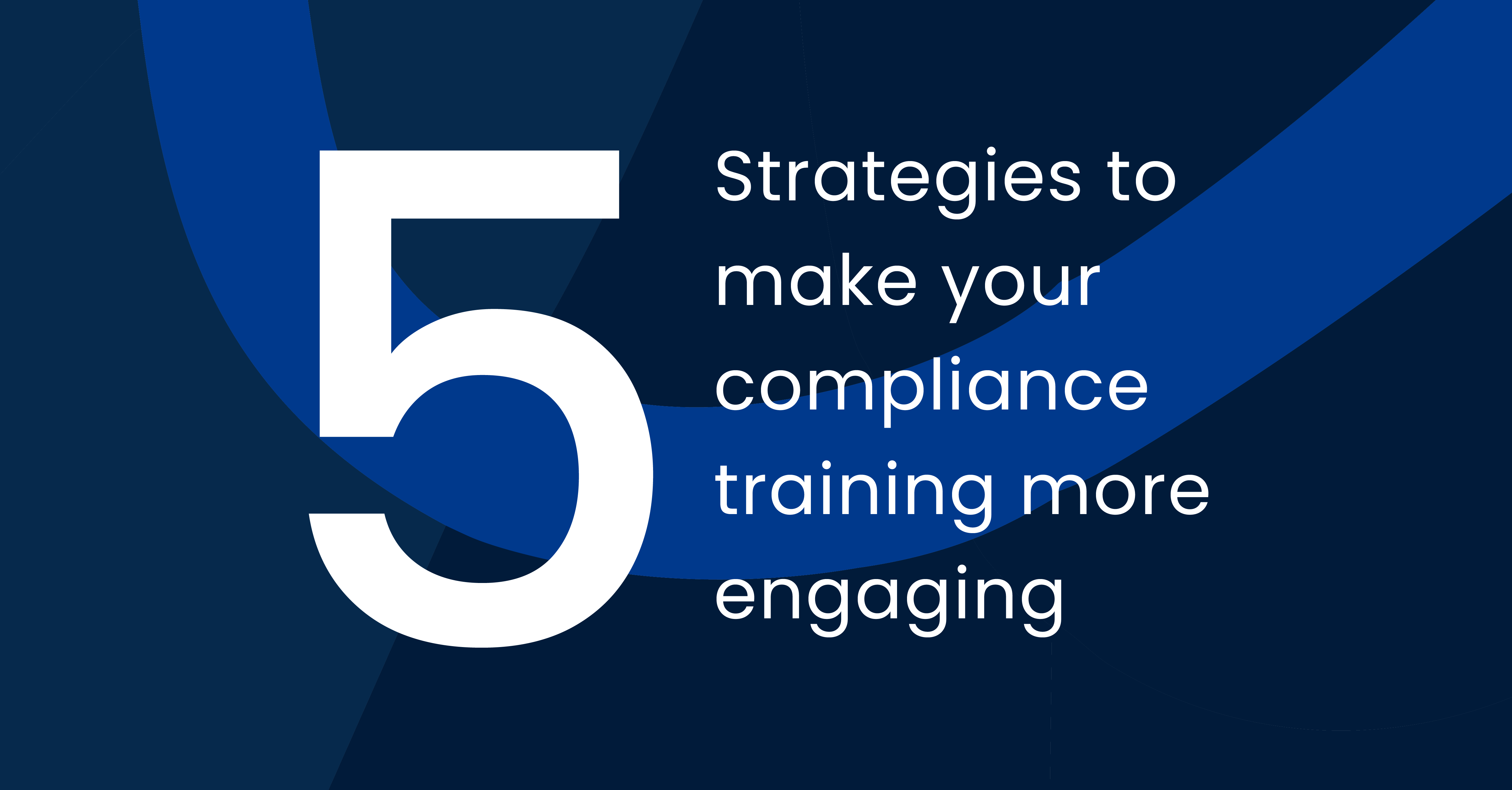Tech as an enabler for learning. Learning tech trends worth watching in 2022 and beyond
Everyone in L&D has had a monster couple of years. The transition to remote digital learning as a universal default, coupled with an urgent demand for new learning on topics like remote working, team building for hybrid teams, and wellbeing, have seen L&D teams under vast pressure to perform.
How to stay on top of tech amidst post-lockdown demands
You could be forgiven for wishing for a reprieve. For thinking, surely we’re over the hump and things are going to slow down. But if anything, post-lockdown demand on L&D is doubling down. The rapidly changing work landscape continues to uncover new areas where workers need L&D support. While businesses struggling to attract and retain top talent have realised learning is a significant draw and are taking L&D seriously (maybe for the first time). And of course, it goes without saying that everyone needs everything yesterday.
Meanwhile, the L&D tech landscape, moribund for so many years due to lack of investment, has bloomed into life. Which is fortunate because learners are sick of learning tech not keeping pace with the ease, accessibility, and intuitiveness of the other tech they use daily.
As a result, many L&D teams find themselves in the unaccustomed situation where they have a tech budget to spend, and a range of exciting new tech to choose from. This sounds thrilling, but acquiring new tech is a chore like any other, requiring consultation, research, and due diligence, and entailing risk if L&D teams get the investment wrong. What if you invest in tech and by the time you come to roll it out, it’s already obsolete? It’s a scary thought.
It's hard for teams under so much pressure to stay on top of the evolving learning tech landscape. So, we’ve asked an expert for their tips on harnessing the power of tech as an enabler for learning and what developments in learning tech are worth watching.
Melissa Crawford is Founding Director of Tech With Heart, a new startup that helps organizations navigate the future of work, optimising the workplace with the best of technology combined with strategies to bring the best out of people. She has two technology degrees and 25 years senior HR experience in major corporates, as well as being New Zealand's first certified metaverse expert, so her expertise bridges the worlds of L&D and technology.
Start with the strategy because tech is just the enabler
Tech’s second nature to many people now. Gen Z now entering the workplace have grown up immersed in tech. Even Gen X leaders stepping into senior roles can’t imagine life without tech.
While tech still comes along that blows our minds, on the whole, we’re over wide eyed gasping at the gizmos. More importantly, people are starting to realise tech doesn’t magically solve organisational problems. Organisations are on their third CRM, and still no one’s using the damn thing. We’ve entered the age of tech as an enabler rather than tech as the holy grail. But that realisation doesn’t make finding the right tech any easier.
So, it’s essential to start with strategy. Do your consultation to understand how your users work and the problem they need solved, then develop a strategy to meet those needs, and a plan for a successful roll out, all before you go hunting for the right tool. Tech without strategy is an expensive distraction. If you put in a shiny new system but you don’t have the ecosystem to support it, you’re setting yourself up for disappointment.
Melissa explains it’s also important to cover the basics, documenting why a certain system was chosen, how it was installed and customised, and why it was structured that way. Often that information isn’t preserved, then key people leave an organisation and that knowledge is lost. Systems start to break because new teams don’t understand why it was built that way, patch things onto it, or even try to get it to do things it’s not designed to do.
Onboarding and ongoing training ensure you’re getting full return on investment from a new tool. Melissa says, “Organisations often leave functionality switched off when they bring in a new system. I’ve worked with a few organisations where I’ve found key features still switched off five years down the track. So, using tech effectively is about maximizing what you've got, learning what’s new, and doing the upgrades. Any good system has a digital roadmap for evolution. If you’re still using a system the same way you did five years ago, you're really not getting full return on your investment.”
A good place to start with any digital improvement project is looking at your existing digital ecosystem and how you can get the most out of it. Melissa says, “You can buy the most amazing system and still be stuck with the same problems because you don't understand your own processes and how they slow things down. I’ve advised organisations against tech investments because they needed to do work first to make that investment worthwhile.”
Consult and test
Melissa suggests exploring new tech collaboratively with your team. “When you’re looking at new technologies, try testing them with your team. Say, ‘We’re trialling new tech for learning, can you try this out for us, and let us know what you think?”
“Build time into your plan for this testing, to look at new technologies and also different ways of delivering your learning materials. Taking a test and consult approach, saying, ‘We want to do this better, so we’re going to try a few things with you first,’ is so much more engaging than saying, ‘Here’s a new system you have to use.’”
“Imagine the ground swell effect of testing. People in your team going, ‘The L&D team got me to test this new learning module and I thought it was going to be boring, but actually it was super cool. I wish all our learning was as cool as that.’ That starts to create a real buzz.”
Onboard people with rich resources
Change management principles state you've got to take people on a journey, explain why you’re adopting a new piece of tech, what’s in it for them, address their questions, and alleviate their fears. And doing that face to face is still best.
Where tech helps you rollout a new system is making sure there are great resources to support people’s questions, along with different mechanisms for helping people learn the new tool.
It's about catering for different needs.
- One person may simply want some context around a new tool’s capabilities, and how it fits into the big picture. A brief intro will be fine for them.
- Somebody else who’s detail oriented may want to learn the system inside out. They’ll need more detailed information. Step by step e-learning and a manual will help.
- Somebody else may simply want to make sure they can upskill to do their job straight away on the new system. They’ll need a fast-track onboarding programme.
- More curious people may want to explore the potential of the new system and appreciate having a rich knowledge base of videos to explore.
- People with impaired vision will need your onboarding material to be accessible to screen readers, and for graphics to be high contrast.
There are many different types of learners, and human centred learning design caters for everyone. It’s about understanding that some people don't want to do a 45-minute introductory e-learning module because they don't need that level of detail. They simply want to be able to find the information they need when they need it. The more rich and diverse your onboarding resources, the more accessible and inclusive they will be for your whole team.
Keep upskilling your crew on technology
Melissa also advises organisations to put more investment into tech onboarding for new team members and regularly training your team to use tech effectively.
“A large number of organisations have an expectation that when a person comes in, they have a base level of tech knowledge. Organisations sometimes offer minimal support to get people going with the basics. But they’re really missing the opportunity to optimise efficiencies in their workforce by showing their people how to use tech tools more effectively.”
“Sometimes people need just in time learning, where they’re doing something and suddenly their lack of tech knowledge becomes a pain point. It’s more meaningful for them to upskill then that it would have been two years ago when they didn’t require that knowledge. So, it's about having the right tools available at the right time. The younger generation are pretty good at tech problem solving, they’ll jump on Google, but not everyone has that curiosity and competency.”
“If organisations looked at the skill levels their team have on the tools they’re using in day-to-day work, and how well their team use those tools to speed up and improve the way they're working, they’d find quite a horrifying gap between the potential of the tools, and the way they’re being used.”
Tech that’s transforming learning
Melissa introduces us to some of her top picks for future learning tech.
The evolution of e-learning
“E-learning is becoming more diverse. Micro learning is a key trend, as is more visual learning. Not everybody's learning style is suited to reading text and visual learning is also linked to accessibility because it’s more engaging and successful for people who have literacy or language issues. We’re also seeing other immersive technologies integrated into e-learning like virtual reality, augmented reality, and interactive avatars.”
“I’m excited by the learning simulations using avatars created by Mursion. Learners can use these avatars to practice real life scenarios. There are so many situations where this would be useful but let’s take leadership training as one example. A major issue across all organizations is leaders aren’t trained to have difficult conversations with their team on behaviour or performance issues. Senior leaders aren’t taking the time to coach managers and support them in this area, perhaps because they’re not good at it themselves. This tool creates a psychologically safe environment where leaders can practice those conversations, try different things out, see how they land, and get better prepared for real conversations.”
Using the metaverse for simulations and onboarding
Melissa explains, “The metaverse is a virtual world where you use an avatar. Some really amazing online learning, conferences, and simulations are hosted within metaverse technology. And although metaverse technology initially seems expensive, it’s a very engaging way to collaborate and running metaverse simulations is a very cost-effective way to test ideas.”
“One example I’ve seen is medical, a global gathering of doctors in the metaverse simulating different treatments on an augmented reality model of an organ to see the outcomes.”
“Another brilliant use of the metaverse is recruitment and onboarding. If your company has a virtual campus in the metaverse you can hold interviews there. Then if someone is amazing, you can give them a virtual tour and introduce them to your colleagues. If you offer someone a job, you can run an induction on your virtual campus, so when they actually arrive on their first day, they already know their way around. You can host training with other new members of your team, so everyone gets to meet everyone else, no matter where they’re based.”
“At one of my first jobs, six thick technology textbooks were put on my desk, and I was told, make your way through these. That was my induction. Imagine how much more engaging it would have been for me to visit the metaverse and engage with that tech through simulations.”
Learning in the flow of work
Melissa believes we're going to see AI weave itself more through tech platforms to support L&D. “I see a future where AI knows from your personal development plan that you’re really interested in developing a certain skill and nudges you to make steps towards that goal by putting learning opportunities in front of you. AI will also pick up if you’re struggling to format something in Word and suggest relevant solutions to support you in the flow of work.”
“And tech platforms will nudge you to keep current and upskilled. You may have been an Excel user for 20 years, but there have quite a few upgrades in that time. So, if you’re still using Excel the same way you were 20 years ago, you're missing some great things. I'm an ex-Microsoft Office master, I used to do exams to keep up to date and it used to blow my mind how many people weren’t aware of the new features because they just used their tools the same way they'd always used them. Everyone is time poor, so that's where AI will come in and make information visible on how to use a platform more efficiently at the right time.”
Tech as a true enabler
Melissa points out some tech can be more hindrance than help. An example she gives is visiting the doctor. “The doctor’s distracted by typing up your notes on the computer. This is such a waste of time, a GP has trained for over five years, and they're doing dictation. So let technology use its power, and let humans do what they’re most skilled at. A doctor should be focused on their patient, building that relationship, observing the patient closely, and using their EQ, while the system transcribes the conversation. We could also be using AI to scan the medical history of the patient and medical research and present diagnostic possibilities. There’s no way a human doctor can scan as much data in a single appointment as an AI can.”
“I see us optimising systems to play to the strengths of humans and technology, supporting both to work smarter. For example, the keyboard will disappear because it's a hindrance. If you look at the history of the keyboard, they were designed to slow people down. The first typewriters weren’t made with the keyboard we have today. But when people typed too fast typewriter keys would stick, so the QWERTY layout was designed to slow us down. Eventually keyboards will be replaced by voice recognition software and brain / computer interfaces.”
Tech enabling learning designers
So far we’ve concentrated on tech as an enabler for learners. Meanwhile, Chameleon CEO Todd Hammington has his finger on the pulse of learning tech, and he gets excited about machine learning as a tool to make learning designers’ lives easier.
“Building learning content is hard because there are so many things to consider. So, anything we can do to make learning designers’ lives easier is a win. I see a future where Chameleon learns from all content created in it, and when learning designers create new content, it deploys that knowledge to help them build. Say for example, someone’s building a health and safety module. Chameleon will draw on its knowledge of the hundreds of health and safety modules built on the platform, and suggest which learning interactions get the best engagement, propose potential content ideas, or share examples for inspiration. All learning created on the platform paves the way for ever more powerful future learning.”
“The tool wouldn’t create learning for people, but it would speed up the process and steer people in the direction of best practice by sharing successful learning formats. We’re not there yet, but we’re collecting data to fuel machine learning, and considering how to handle security concerns, so the Chameleon community can elevate each other without compromising IP.”
“We’re already enabling learning designers from a design perspective. Many learning designers aren’t trained graphic designers or user interface designers. And we believe good learning designers shouldn’t be expected to excel in these fields. They have their own wheelhouse, which is valuable enough.”
“Because Chameleon is a design first tool, design, user interface, and accessibility best practice is baked in. This makes it easy for learning designers to create beautiful learning that’s also ticking all the boxes for accessibility, legibility, and engagement. We’re also integrating third party technologies like 3D, AR, and VR, so your e-learning can be as immersive and engaging as possible, as well as sub-tenancy hosting so you can create learning domains for customers as well as your team, and even monetise your learning.”
Tech isn’t the hero. You are
Todd believes the biggest challenge in the future of learning technology is simplicity. “Learning designers are the hero of this story. Your learners, your organisational goals, your subject matter expertise, you’re the point of what we do. Not the tech. The tech is just a tool.”
“It’s our job to show off your learning content, your brand, and your brilliance. To do this we need to make Chameleon as invisible and as intuitive as possible. The more powerful the tech, the easier it should be for you to create beautiful learning to your team.”
If you’d like to enable a culture of learning in your organisation, view our demo, and see how Chameleon makes beautiful learning easy to achieve.
Share this
You May Also Like
These Related Stories
.png?width=5001&height=2614&name=MicrosoftTeams-image%20(20).png)
It’s time to escape the clutches of SCORM

Measuring the impact of learning


-png.png?width=902&name=Preview%20Section%20(1)-png.png)
